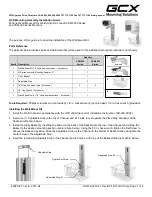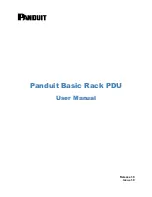
isolation base with the inner plate facing up and the external support feet facing
down (same orientation as when use to support your component). The inner plate
is bonded to the outer frame. Following these handling instruction will prevent
damage to the unit and will ensure the inner plate does not accidentally come out
of the outer frame when moving the isolation base.
Set-Up Instructions
Placing components with sharp or pointed feet directly on the isolation base may
cause nicks, scratches or gouges in the surface. Use a protective barrier between
sharp objects and the base surface if you desire. The M3 Isolation Base is very
effective at reducing vibration and does not require the use of cones and other
sharp objects. Cones can be used with the isolation base and do not degrade the
isolation base performance. Protection from sharp objects as described above is
recommended to prevent scratches and maintain the original beauty of the
isolation base.
M3 Isolation Bases are produced for various load ranges to optimize
performance. Please verify that the component that will be placed on the
isolation base is within the rated load. You can determine the load range of your
isolation base by the color code in the isolation base part number. The isolation
base part number is located on the product identification tag fixed to the bottom
of the isolation base. See the specification section of this manual to determine the
rated load range of your isolation base. If the M3 Isolation Base is overloaded
the custom HRS isolators will bottom and significantly reduce the product
performance. You can check to see if the isolation base is overloaded by checking
for compliance between the isolation base frame and the four small feet. With the
component loaded on the isolation base, check each corner individually by
pressing on each corner. The isolation base should be compliant at each location
and not rigid. If there is any displacement prior to bottoming then the isolation
base is working fine. If there is no compliance at all then the load range should
be changed by HRS to the proper range. HRS can modify the M3 Isolation Base
load range as many times as needed for a fraction of the original purchase price.
Overloading the isolation base for an extended period of time may reduce its
service life and voids the warranty.
A majority of source components have a center of gravity that is approximately
near the geometric center of the component. However, some amplifiers and
source components can have significant variation in weight distribution that is
dependent on the design layout of the heavier objects within the component.


























